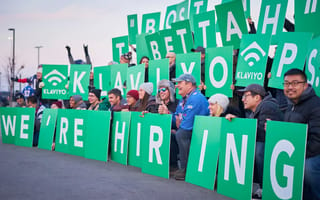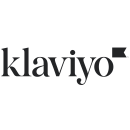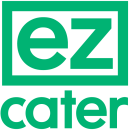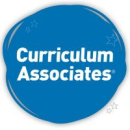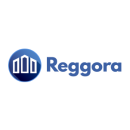Boston is a city of firsts. The city produced America’s first public park; the first public school; the first subway system. In tech, being the “first” is essential to both creating change in the world and making an impact in the ever-evolving industry. So why shouldn’t Boston’s engineering teams abide by the same pattern?
Becoming known as an established innovator takes more than just a one-time popular product or offering a service that is only satisfactory. It also requires a shared set of beliefs, a strong sense of collaboration and unique perspectives between engineers to approach problems from multiple angles.
At ezCater, paving the way with new technical approaches and consistently rethinking their current processes is not only beneficial to their clients but to their teams as a whole, according to Engineering Manager Dan Collis-Puro.
“Developer Experience is a newish discipline,” Collis-Puro said. “We’ve needed to define what ‘DevEx’ means and stay responsive to changing needs so we can keep engineers happy and productive as priorities change.”
Built In Boston caught up with Collis-Puro and six additional engineering professionals to discuss what tech stacks help them achieve their most challenging projects and why their currently-hiring organizations stand out from the rest.
AppHarvest uses controlled environment facilities to sustainably grow healthy, delicious foods on a large scale year-round.
Their tech stack: “The harvesting robot takes a modular design approach, which is composed of a collection of electro-mechanical subsystems with their own tech stacks,” Aditya said. “I primarily work on the perception subsystem, which uses a set of camera sensors on an edge compute device with GPU capability. We use C++ and the OpenCV library for running computer vision algorithms, CUDA programs for parallel processing of image data, the Caffe framework for training Deep Neural Networks, and NVIDIA TensorRT to optimize the machine learning models for deployment. We also use python-C++ bindings and python scripting for offline data processing, algorithm evaluation and metrics generation.”
The more you know: “I’m working on an image-based tomato ripeness prediction project! Some of the challenges lie in creating a solution that is robust to image noise, color noise, varying lighting conditions, occlusions and image artifacts. Not all tomato varietals have the same color; some tomatoes ripen to yellow, orange, red or even purple. The solution should be extendable to other types of fruits and vegetables that ripen differently.”
“Ripeness Prediction is a very unique problem in the field of computer vision and machine learning. Along the way, I’ve learned a lot about color theory and how the human eye perceives color.”
Gaining multiple skills: “For a highly skilled and diverse team of software, mechanical and electrical engineers, we know a lot about indoor agriculture and the tomato plant anatomy. Any new engineer who joins our team will be able to differentiate a tomato’s calyx from its peduncle and identify different varietals of tomatoes in a matter of days.”
“Another unique aspect is the overlap of research and engineering. Some of the problems we are solving do not have standard solutions and involve research and development efforts in the area of AI and robotics. Such efforts have led us to institute an iterative technical development program that focuses on closing the loop early, including algorithm brainstorming, prototyping, implementation and field validation – which has enabled us to be more agile in developing new features and algorithms.”
Rue Gilt Groupe is an off-price e-commerce portfolio company, connecting more than 35 million members with designers and in-demand labels at value. Three complementary brands, Gilt, Rue La La and Shop Premium Outlets, strategically support the business’s brand partners.
Their tech stack: “I am part of the business intelligence and data warehousing team,” Ayenew said. “Our main objective is to collect data from various tools and activities and transform them into digestible data sources and insights. Snowflake is our main analytics data warehouse. Our data pipelines are implemented using Python. We source data from Oracle, AWS S3, third-party APIs and local file systems into Snowflake.”
“As a BI engineer, most of my time is spent using Tableau as our visualization. We are able to create effective and informative visualization to provide our business partners the necessary insight to run the business successfully. Leveraging some of the newer Tableau releases, we are able to enable our stakeholders to do more with data.”
Proving the product’s value: “I am currently working on a project with our data science and merchandising team that focuses on predictive sales. I enjoy working on initiatives that impact both our customers and our associates by creating internal tools to help them optimize the merchandising and buying function. We work cross-functionally with our partners to provide business intelligence that drives sales and profitability. With the holiday season fast approaching, we are focused on ensuring that our merchants have all the tools and data they need for a successful Q4.”
Uplifting team dynamics: “I think the team has struck a fantastic balance between being result-oriented while still having a fun identity. Throughout the five years I have worked on the team, we’ve been able to consistently deliver on tasks while still ‘throwing shade’ at one another and having a laugh. For example, we have a particular Slack channel that kept us engaged and relaxed while working from home. Throughout the day, folks in the team post puzzles, dad jokes, dog pictures, and engagement pictures. The random organic growth of the channel and the engagement still amazes me.”
Klaviyo’s platform helps e-commerce brands leverage their existing marketing channels and deliver targeted customer and prospect communications.
Their tech stack: “We use a variety of technologies at Klaviyo,” Korcia said. “A shortlist includes Python, Django, Celery, Java, MySQL, Cassandra, RabbitMQ, Redis, HTML, JavaScript, LESS, Backbone.js, React, AWS, Terraform and other DevOps tools. My team’s favorite tool is definitely Python.”
Overcoming knowledge gaps: “On our team, we build new products from scratch, which requires a variety of skills and involves multiple steps from creating, designing and implementing ML models to standard back-end/front-end coding in Python, React and JS.”
“It’s quite difficult to master all of these skills at once, and each of us had to overcome some knowledge gaps. I really enjoy the projects because I keep learning new subjects and tackle new challenges every day. There are so many great ideas in the near and far-off future.”
An inviting culture: “Even though I haven’t had the opportunity to work from the office yet, Klaviyo is one of the best places I’ve worked. The management team is very accessible, helpful, and takes part in everyday problems and challenges. People are extremely friendly and collaborative, and we work with cutting-edge technologies at scale, adapting to changes and accelerating growth. There is also a lot of flexibility in the team – you can always ask to change your area of your responsibility and experience new challenges.”
ezCater connects businesses with restaurants and caterers through an online marketplace to help leaders feed their employees.
Their tech stack: “ezCater runs on Kubernetes in AWS,” Collis-Puro said. “Our GraphQL APIs are mostly Ruby on Rails, PostgreSQL, and Redis. Longer running processes use Sidekiq.”
“Our front ends are React, with our design system Recipe creating a common ‘pattern language.’ If your company builds JavaScript front ends, you should invest in a design system! We’ve found that Recipe avoids duplication of effort, ensures the right people make the right decisions, and speeds up feature delivery. The reusable branded UI components are tested across multiple properties and make internationalization a first-class concern. Recipe has been a huge time and frustration saver! Our engineers love it.”
Constant improvement: “Balancing longer-term projects with ‘quick hits’ is a challenge. We focus on building easy-to-understand systems to help engineers contribute to the tools we use, and have had good success with organic contributions. About a third of our engineers have submitted fixes to our local dev framework in Tilt.”
“However, local development is resource intensive. Our engineering org is paying down technical debt that makes it hard to work in isolation, as it can be difficult to fit everything on a single laptop for some teams. We’ve focused on making local development through Tilt as fast as possible, but that only gets you so far. So we’re planning to back local development with remote services to lighten the local burden while squads experiment with contract testing, external service mocks, and re-architecting services to reduce coupling.”
Paving the way: “Developer Experience is a newish discipline, and the ezCater DevEx team is a little more than a year old. We’ve needed to define what ‘DevEx’ means for ezCater, and stay responsive to changing needs so we can keep engineers happy and productive as priorities change.”
“The engineering org and the entire ezCater company has a customer focus on a level I’ve never seen anywhere else, and that carries over to the rest of the company. During our journey from a scrappy hyperscaling startup to the more mature engineering org we’re becoming, we haven’t lost the drive to ‘Go Beyond Helpful’ and it really makes ezCater a pleasant place to work as an engineer. We’re all in this together.”
Curriculum Associates is an edtech company committed to making classrooms better places by giving educators and students access to helpful resources.
Their tech stack: “In my role as an engineering manager at Curriculum Associates, I personally manage three different teams – each with a different tech stack,” Schmaelzle said. “One of my teams, the Centrals, runs on WordPress CMS, while others, such as the Teacher Toolbox team, work with Magnolia CMS which is a Java-based content management system.
“Finally, on the team that handles Educator Experience, we use React/Redux as our framework and Java on the back end. On the front end, we use Puppeteer for feature testing, which the team has vocalized as one of their favorite libraries. Puppeteer reassures the QA and front-end teams that the feature they have implemented works as expected. More than anything, the team enjoys using Puppeteer because it gives them peace of mind that things are working well.”
Developing the future: “We are really excited to be working on adding a Google Classroom functionality to Teacher Toolbox, which is an application that provides educators with K-8 learning resources to accommodate students at all levels of ability. This new integration with Google Classroom allows teachers to assign lessons to students directly through Teacher Toolbox. This functionality saves teachers the hassle of having to download resources, upload them to Google Drive, and then assign them to their students through Google Classroom. With this new functionality, everything is all in one place.”
Collaboration through kindness: “The whole engineering organization at Curriculum Associates is very different from any other place I’ve worked. It’s unbelievable how genuinely kind and helpful everyone is. Not only was everybody so nice from the second I began working here, but they’ve stayed nice even after I stopped being ‘new.’ The exceptional collaboration throughout all of CA’s engineering organization – between the front end, back end, QA, product and development teams – is what I think makes us so successful. Even though I only experienced CA in-person for about two weeks before COVID-19 closed our office, I feel like I’ve been there all along. It’s been a fantastic learning experience for me.”
Wistia is a video marketing software designed to improve users’ audience engagement and to help businesses grow.
Their tech stack: “On my team we use React, GraphQL and Ruby on Rails for building cool stuff,” Barrett said. “And we use Jest, Enzyme, React Testing Library and TestCafe for testing and maintaining trust in that cool stuff!”
Making what’s good, better: “I’m currently leading a project to migrate some of our platform’s key content management pages from full-stack Ruby on Rails to React and GraphQL. I love exploring new and improved ways to implement customer-facing features, and rebuilding legacy functionality in our more modern stack is such a fun challenge. Doing this will help us innovate and build new features even faster in the future, which I’m psyched about.”
Taking a stand to stand out: “We’re given a nice balance of structure and autonomy, and a lot of room to be creative, innovative and try new things. We have a company-wide hackathon every year, which brings everyone together to brainstorm and build neat things while competing for fun prizes. It’s so great to collaborate with folks you don’t usually work with, including those outside of your department.”
“After I pitched an idea to start Wistia’s ‘Front End Guild,’ a cross-team meeting focused on exploring front-end concepts together, I got tons of support to make it a reality. At this point, our Front End Guild meets monthly, and our meetings range from engrossing discussions to engaging presentations. Most recently, one of our senior engineers walked us through how his team added TypeScript to their codebase.”
“Most importantly, as a woman in tech, I feel valued at Wistia. Wistia walks the walk when it comes to diversity, equity and inclusion by creating inclusive spaces. I also adore our internal Women In Engineering group, and draw advice and support from the ladies there.”
Reggora is a fintech company that offers software to mortgage lenders and real estate appraisers.
Their tech stack: “Reggora’s products are built with Python, Javascript, and Mongo on AWS,” Eckhardt said. “We leverage several frameworks – Flask (Python), React (JS), and Ant Design (JS) – and one managed service, Atlas (MongoDB). For testing, we look to Pytest, Jest and Selenium Grid with Nightwatch. Our repositories and workflows (CI/CD) are in GitLab. We get telemetry via DataDog and Sentry.”
Making an industry-wide impact: “Reggora is revolutionizing the multi-trillion dollar mortgage industry by optimizing the lender and appraisal workflows to increase the efficiency of the lending process. Simultaneously, we are decreasing time to close (the most anxiety-prone step of the process) with specific attention to reducing appraisal turn time. Optimizing this multidimensional routing problem is one of the problems you’ll help solve at Reggora.”
Most enticing benefits: “Reggora’s culture is truly wonderful – low ego, high productivity, fully remote!”

